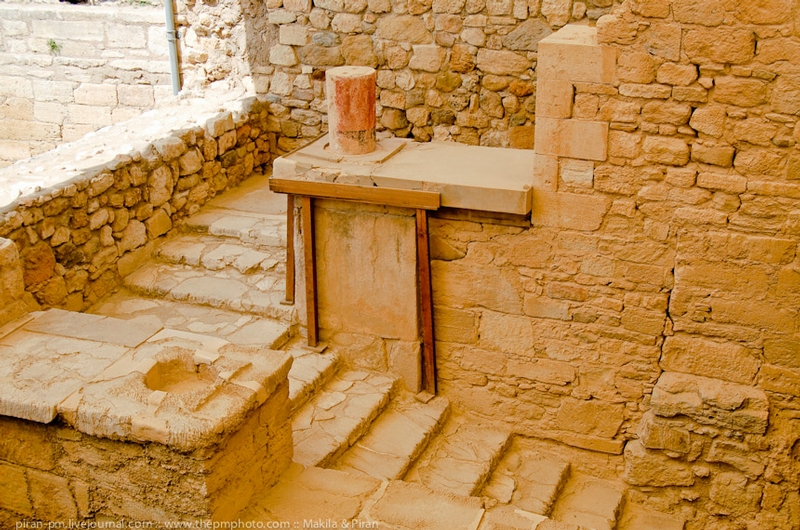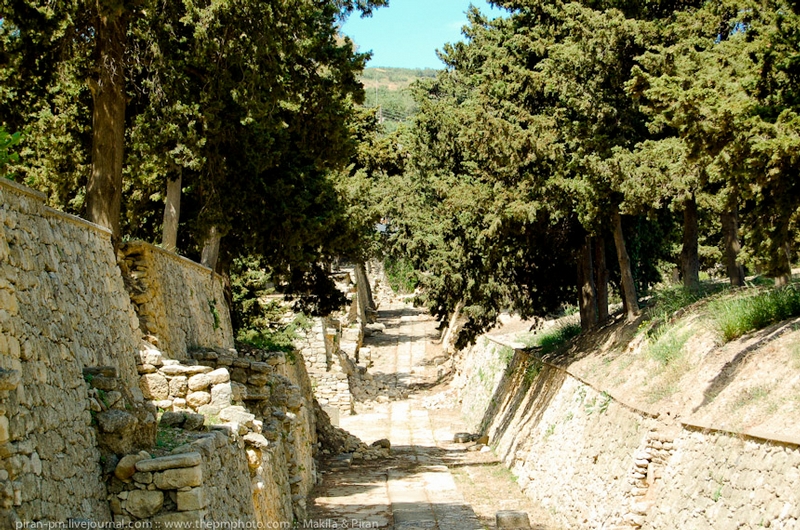
The city of Knossos is the most ancient colony of Crete, one of the first European cities and the most important site of the Minoan civilization named after the son of Zeus and Europa, Minos.

Knossos is situated in the central part of the northern Crete. In ancient times the city was perceived as the capital of Crete and the residence of a great King known as Minos. The king reigned over the islands of the Aegean Sea and made numerous cities including Athens pay tribute to Crete. He ordered the Athenian king Aegeus to send 7 boys and 7 girls to be sacrificed to a monster named the Minotaur every 8 years . The monster was later slain by the hero Theseus with the help of Minos' daughter Ariadne. It was Theseus who freed Athens from the humiliating dependence.

Knossos Palace on Crete was named "a labyrinth" because the symbol "labrys" translated as "double axe" was frequently observed in the sanctuaries of the palace. It was situated on a huge hill 3.1 miles (5 km) inland from the northern coast of Crete near the present-day town center of Heraklion. That was the site where the city of King Minos and the ancient city of Knossos were located. The latter existed till the Roman times.

The first palace of Knossos was built 1400 to 1700 BC. It was later substituted by another palace created in 1700 BC. The period between 1700-1450 BC was the apex of the Minoan civilization and Knossos in particular.


The palace was considerably destroyed in the result of an earthquake. The restoration that took place afterwards changed the situation for the better and was accompanied by construction of other splendid structures. Another extensive disaster of the Santorini volcano was dated to 1450 BC.

The Prince of the Lillies


It is a special audience hall that faces the internal yard. Its northern wall is decorated with the Griffin Fresco.The room has a graceful gypsum throne.

The final destruction of Knossos palace resulted from the Dorian invasion. The palace was not inhabited any longer though the city of Knossos remained the dominating center of other city-kingdoms on Crete. In the Roman period the city loses its former importance and becomes totally abandoned during the Venetian period.


Knossos palace which occupied about 16 thousand square meters and consisted of hundreds different rooms was considered by the contemporaries as a complex building without any exit. Since those times the word "labyrinth" was used to denote a maze of endless corridors and rooms.

A cruel son of King Minos was considered the Minotaur prototype.

Ariadne's Thread

The columns of the palace were far from being traditional, they expanded upwards and lacked the pictures of plants. The architects refused to follow the nature and created a site that was totally different from other Greek palaces.The columns are decorated with simple patterns.




















Sir Arthur Evans started the excavations in the city of Knossos in 1900. His statute was established at the entrance of the palace.

Enjoying the view of peacocks...

... and cats


The tree that grew from the stones
via piran-pm
You have read this article Ancient Culture Constructions /
Art History /
Crete /
Greece /
Knossos
with the title Knossos palace, Crete Greece,. You can bookmark this page URL http://emill-emil.blogspot.com/2011/05/knossos-palace-crete-greece.html. Thanks!







